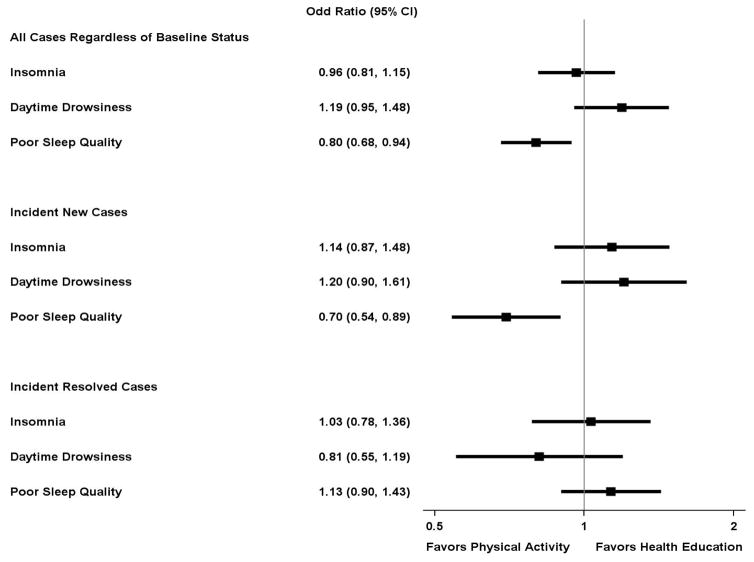Figure 2.
Odds ratioa (95% confidence interval) for effect of physical activity intervention on sleep-wake disturbancesb over timec
aCalculated as the average odds ratio across the 30-month follow-up, adjusted for field center and gender.
bCategorical variables, including insomnia (Insomnia Severity Index ≥8), daytime drowsiness (Epworth Sleepiness Scale ≥10), and poor sleep quality (Pittsburgh Sleep Quality Index >5), and further stratified as: 1) all cases (regardless of baseline); 2) incident case of a new sleep-wake disturbance (in those who did not have the corresponding sleep-wake disturbance at baseline); and 3) incident case of a resolved sleep-wake disturbance (in those who had the corresponding sleep-wake disturbance at baseline).
cSee footnotes to Figure 1 regarding missing data on sleep-wake outcomes and adherence to the physical activity and health education interventions, across the 30-months of follow-up.

